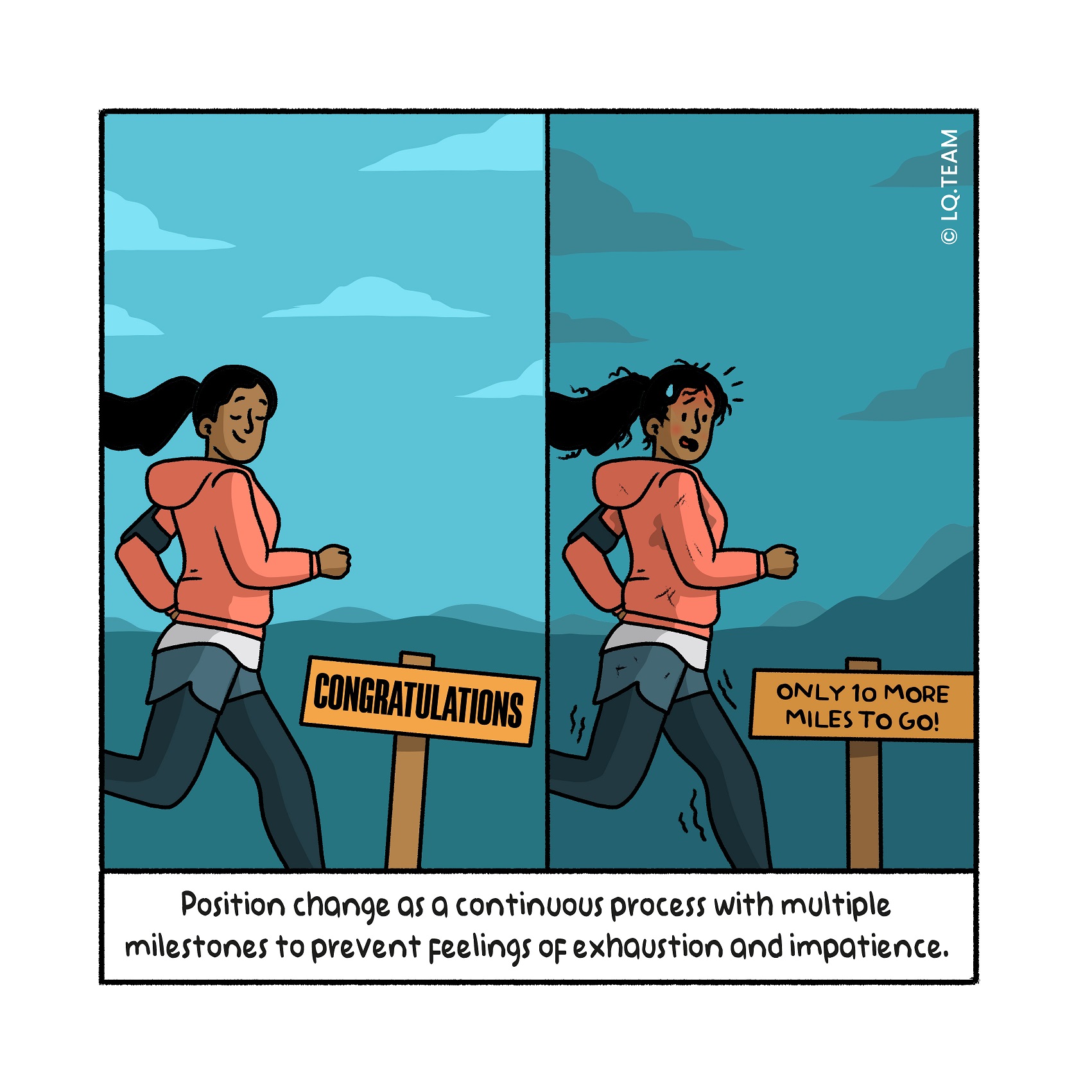
Nut to crack: Everyone thinks we’re done, but we aren’t, so how do we reactivate?
Suppose you start getting more and more questions like “haven’t we finished yet?”, or comments like “it’s been so long”. However, you know the transfor- mation is not done because people are not yet working as intended. If you let go now, all the effort put in so far will be in vain because it will only trans- late partially, if at all, into the intended business value. At the same time, it is tough, and you may feel exhausted. What do you do then? How do you reach the actual finish line?
Nutcracker: Reformulate the finish
Particularly with change processes modelled in project form, there is a risk that everyone will think they are ready on paper at some point, before the actual business benefits have materialised. It is a common misconception that business results will happen spontaneously when the project is handed over to the running business organisation.
That is why it is wise to position change processes from the start as processes with important milestones linked to business impact. This is based on plan- ning, but the actual realised business results determine whether the change is completed, not the predetermined project timelines.
Using periodic evaluations, you measure which impacts have already been achieved and which haven’t yet, and then determine what is needed to achieve the desired impacts. This requires iterative thinking and the will to adjust plans if the business reality requires it. The following practical example makes this explicit.
Real-life example: From “finished” to “basecamp has been reached”
The new logistics planning system has successfully gone “live”. The project is ending, but the investment still needs to be recouped. Many employees ignore the new system and revert to old working methods. The system should save time, but the opposite hap pens. The planning and logistics manager is concerned. How can he adjust?
He organises a meeting with the most critical stakeholders, in which he repositions the completed “go live” as making it to the “base camp” on the way to the top. He then explains that the next destination to reach that summit is “Camp 1”. Just like with a regular mountain climb, you can take a break at base camp. You replenish your reserves and prepare for the trip to Camp 1.
He appoints a few new and two existing team members to lead the journey to Camp 1. Their mission: make the implementation of the system profitable. This repositions the system implementation as a continuous process with multiple milestones rather than a oneoff exercise, and it shifts the focus from bringing a system live to cashing in on the value of that system.
Tip for change leader
If you have a lot of open issues at the end of a change process and want to complete this process, set up a “fixit team”.
This team starts by drawing up the list of open issues that must be resolved, and then “fixes” that list. By giving them complete focus on this activity, you can resolve in a few weeks what would otherwise take a few years. This means you don’t let value go to waste.
Tip for change enabler
It is recommended to organise a kickoff at the start of a change process in which you discuss the iterative nature of the process. This is one of the most important obstacles that stands in the way of real success because replanning or adapting the route is seen as a failure by change leaders and enablers. The fact is: yes, planning and working efficiently are essential in change processes. Still, just as important is recognising that a change process cannot be fully predicted and controlled. Manage this expectation proactively.
Kernel: Position change as a continuous process with multiple milestones
If you want to achieve sustainable change, which involves working differently in practice, it is wise to link the final goal to the impact you aim for rather than making it time-bound.
This does not mean you shouldn’t also work systematically to achieve pro- gress efficiently. But it does mean you are willing to plan new activities and adjust or shift priorities, if necessary, to reach the finish line.
